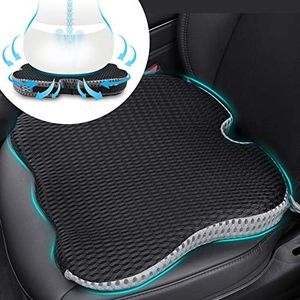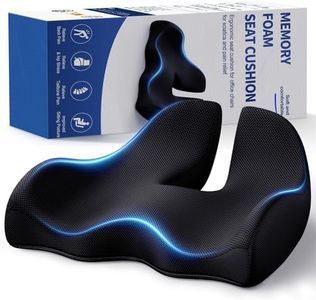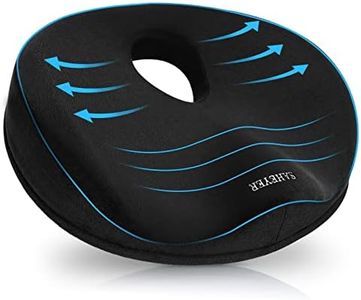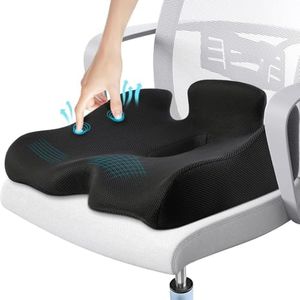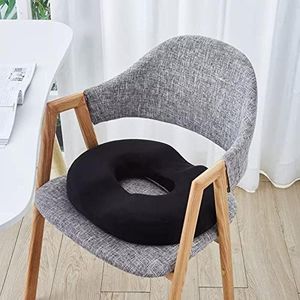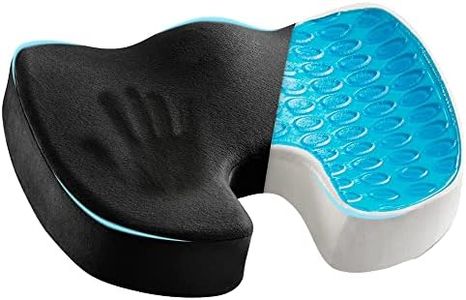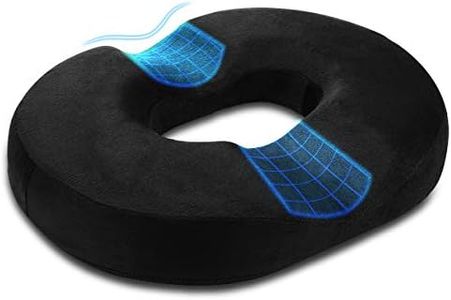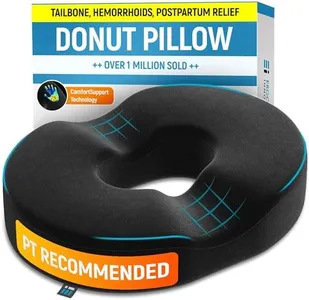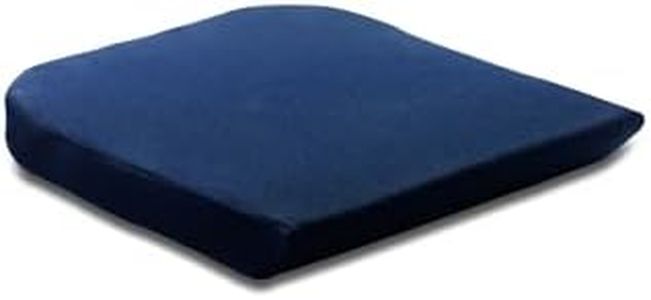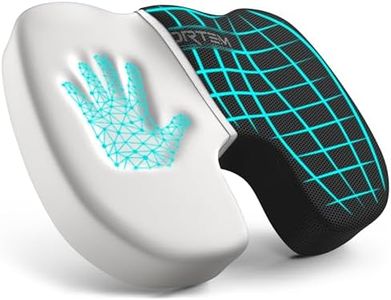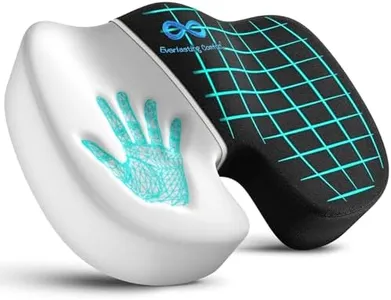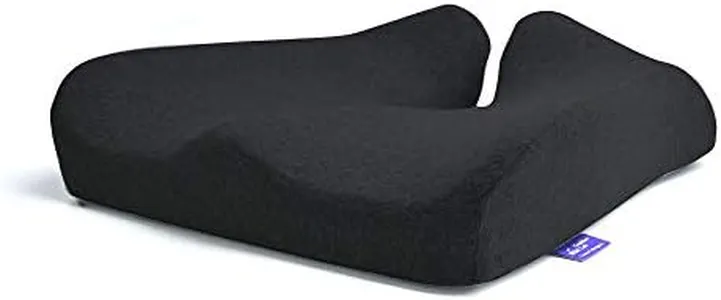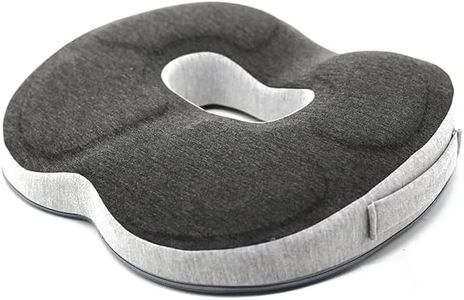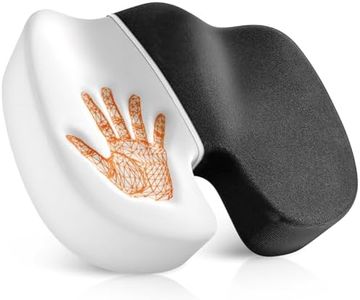We Use CookiesWe use cookies to enhance the security, performance,
functionality and for analytical and promotional activities. By continuing to browse this site you
are agreeing to our privacy policy
10 Best Coccyx Pillows
From leading brands and best sellers available on the web.Buying Guide for the Best Coccyx Pillows
Choosing the right coccyx pillow can make a significant difference in your comfort, especially if you spend long hours sitting, have tailbone pain, or want relief from lower back discomfort. The goal is to find a pillow that supports the tailbone, reduces pressure, and improves your sitting posture. As you shop, consider how and where you’ll use the pillow, whether it's for office chairs, car seats, or wheelchairs, and let your personal comfort needs guide your final decision.MaterialThe material of a coccyx pillow is crucial because it determines how comfortable and supportive the pillow feels. Common materials include memory foam, gel-infused foam, and high-density foam. Memory foam is known for molding to your body shape and providing targeted support. Gel-infused foams offer added cooling, which can be helpful if you tend to get hot while sitting. High-density foams are firmer and can be more durable. If you prefer a soft, adapting cushion, memory foam might be right for you; for extra coolness, look for gel options; if you need firmer support or plan to use the pillow heavily, high-density foam is preferable. Think about where you’ll use the pillow and how much support you need, as effective tailbone relief often depends on matching the firmness and softness to your body type and sensitivity.
Shape and Cut-Out DesignCoccyx pillows often have a U-shaped, wedge, or donut-like cut-out, which is designed to reduce direct pressure on the tailbone. This feature is important because it helps elevate the tailbone off the sitting surface, enhancing comfort and relieving pain. U-shaped cut-outs are standard and work well for most people seeking pain relief, while wedge designs can also assist in improving posture. When choosing, consider your discomfort area—if tailbone pain is the main issue, the cut-out design is a must-have. If you are focused more on general lower back support, a wedge design might be more beneficial.
Size and ThicknessThe size and thickness of the coccyx pillow affect its fit on chairs and its comfort level. A pillow that is too thin may not provide enough cushioning, while one that is too thick could raise you too high and feel unstable. Standard sizes work for most office or dining chairs, but if you have larger seats, such as in cars or wheelchairs, check the dimensions to ensure a good fit. Thickness usually ranges from about 2 to 4 inches. Those with heavier body weights or severe pain often need a thicker or more supportive pillow. Always consider where you’ll use the pillow and how much elevation or cushioning feels good for your body.
Cover Fabric and MaintenanceThe outer cover of a coccyx pillow impacts breathability, hygiene, and durability. Look for covers made from breathable fabrics like mesh or cotton blends, which help manage moisture and keep you cool. Removable, washable covers are essential for easy cleaning, especially if you’ll use the pillow daily or in shared environments. If you prioritize cleanliness or will transport the pillow often, choose a model with a sturdy, washable cover so that it's easy to maintain in the long run.
Portability and WeightIf you plan to move your coccyx pillow between home, office, and car, portability can be a big advantage. Lightweight pillows, those with carry handles or compact designs, make transportation easy. Heavier or bulkier pillows are better suited for stationary use. Think about your lifestyle—if you’re often on the move, a portable design is more convenient. If you'll keep the pillow mostly in one spot, portability is less of a concern.
